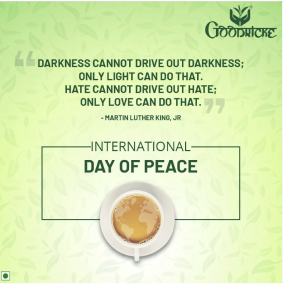In the serene hills of Castleton, nestled amidst the mist-kissed valleys and verdant slopes, lies a place where tea transcends mere sips; it becomes an experience that can enchant all who come across it. Welcome to Castleton Tea Gardens, a heaven where tea leaves whisper stories of heritage, craftsmanship, and unmatched quality.
Picture a landscape painted in breathtaking shades of green, with the rising sun casting its golden glow all over it. Here, amidst the sprawling tea estates, Castleton stands as proof of several generations’ hard work and artistry. The journey of Castleton Tea begins not with hurried plucking but with the meticulous selection of only the finest leaves nurtured by the cold mountains surrounding it.
Step into the gardens and you will be greeted by rows of tea bushes, their leaves glistening with the morning dew. The exclusive nature of Castleton lies not just in its picturesque setting but in the meticulous process that transforms these leaves into liquid gold. The gardens have a rich history behind them that is also worth delving into.
The History
In the misty hills of Castleton, lies this magical place called the Castleton Tea Estate that sat like the king of all the gardens owned by Goodricke, known far and wide for its amazing tea. However, the tale of this special place started a long time ago, way back in 1885, when a man named Dr. Charles Graham planted the very first tea bushes there.
The estate was perched high up in the mountains, between 915 to 1830 meters above the sea. Imagine rows and rows of tea bushes, all from China, growing happily amidst the clouds and the mist. The estate got its name from a big building in Kurseong that looked just like a castle, even though its original name was Kumseri. This castle-like building was built by a rich person who lent money, and everyone called it the 'Bank Ghar.'
What makes Castleton more special is that instead of boring numbers, they named their tea sections with really interesting names. There was one called BhaluKhop, which means 'Bear Cave,' another was Jim Basha, where the big boss used to work, and Dhobitar, which was where they would hang up clothes to dry. These names were like little stories that showed how awesome the garden's history was.
People said Castleton was like a place blessed by nature itself. The mountains, the earth, the sun, the mist, and the dew all came together to help grow the most amazing teas in the world. Even kings and queens from places like Japan, England, and the Middle East have tasted and appreciated this tea.
Castleton tea, crafted from the China bushes, is famous for its delicate and exquisite flavors. Imagine a fragrance as lovely as roses and a hue as radiant as sun-kissed amber. What makes these teas so special is their 'muscatels.' They are like the sweet wines you would enjoy in the summer, with a burst of intense fragrance that will remind you of musk.
The Estate
Established in 1885, Castleton Tea Estate sprawls across elevations from 2500 to 5000 feet above sea level. Despite its unassuming appearance, the estate boasts a spectacular view and an energetic ambiance, even during winter.
About 70% of the estate is graced by ancient chinary bushes, while the rest features high-quality clones like AV2 and Seeyok 1240, thriving at higher elevations. At 5000 feet, slow growth due to lower oxygen and cold weather infuse concentrated flavors into the tea leaves. Between 4500 and 3000 feet, Chinary bushes flourish under ample sun, ideal for muscatel tea production, renowned for its bright taste and intense fragrance.
So, what exactly is muscatel tea?
The concept of muscatel tea is a hot topic in the tea world, sparking debates among experts. Opinions diverge on what truly defines muscatel tea. Some attribute it to a juicy, fruity quality akin to cantaloupes and grapes in a summer flush black tea, while others describe it as spicy and fruity. For some, it's a matter of aroma; for others, it's about a distinctive taste, leading to differing viewpoints among ardent muscatel enthusiasts.
Mr. Gurung, associated with Castleton and Seeyok factory, known for its muscatels, describes it as a unique and indescribable quality. He shares that identifying a muscatel tea goes beyond appearance or fragrance; it is a feeling.
The saga of muscatel at Castleton began in 1985 when Arun Kumar Gomden, then a factory manager, introduced the first muscatel black tea. It exuded an intense, unconventional fragrance and a rich, grape-like flavor, prompting the term 'muscatel' after the Muscat grape used in winemaking. This exceptional tea debuted at the Calcutta Auction Sale, fetching record prices and winning accolades. Castleton's muscatel teas continue to command high prices, with their 1992 batch setting a world record at Rs. 13,001 per kg.
Take Away
As the sun sets behind the rolling hills, casting an amber glow over the gardens, the legacy of Castleton continues to thrive. Its exclusivity isn't confined to its boundaries but echoes in the hearts and palates of those who have been touched by its magic. In other words, the Castleton tea gardens have cultivated, cared for, harvested, and even sold the most premium quality tea. Leading tea companies drawn by the exclusivity of Castleton tea have tied up with these skillful planters to bring the finest tea to one’s palate. If you are a true blue tea lover, do not wait to taste the Goodricke Castleton tea, a perfect example of award-winning quality and taste!












